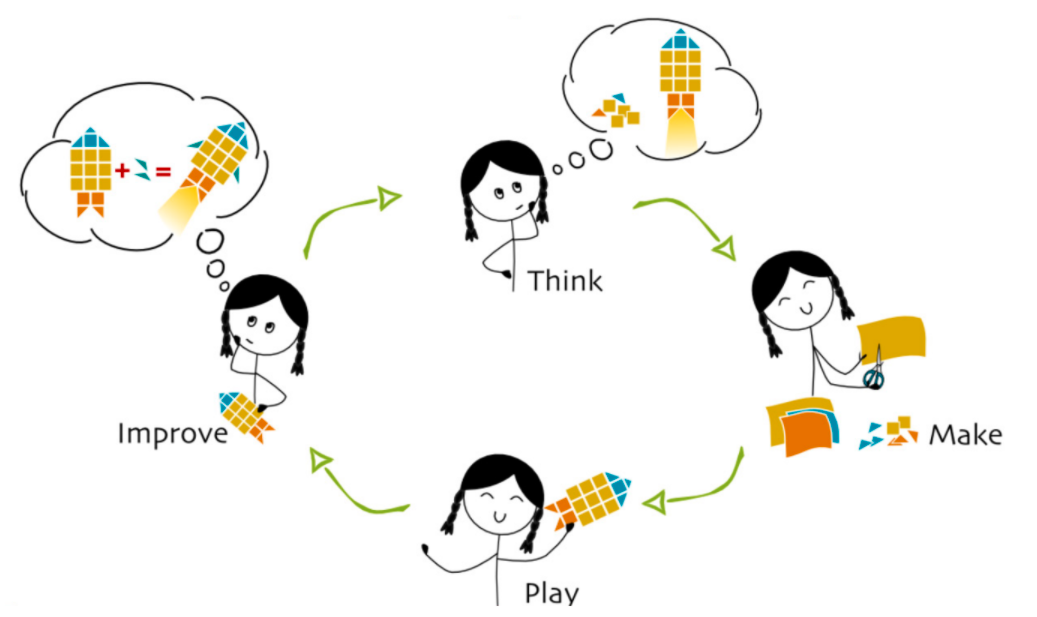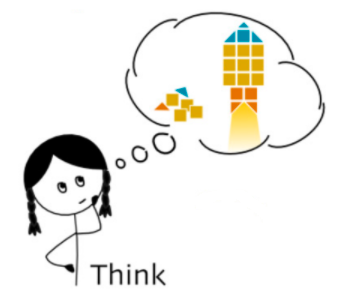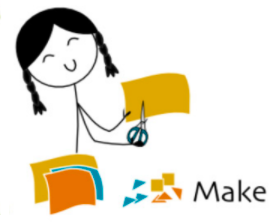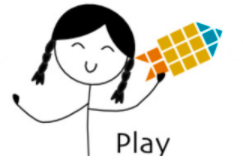TMPI and content creation process
Creating something, be it a digital content or any tangible craft, is a rewarding experience. There are hardly any people who don’t like to create, and yet most people don’t because they struggle with the process of creating. While there is no specific formula for creation, there are common patterns seen in the processes that effective creators follow. In this article, I want to share with our readers one such creation process which is a core of all Karkhana’s processes . We call it the TMPI cycle, or simply TMPI.

It’s an acronym for Think, Make, Play, Improve. Almost anything we create at Karkhana, including this article you are reading, goes through multiple iterations of the TMPI cycle before it’s ready to be shared.

Let’s discuss individually each of the four stages of TMPI. Because it’s a cycle, there’s no specific starting point. Just for convenience, I’ll begin here with the Think stage, also known as the Ideation phase. Every work of creation ever made intentionally started as a thought, an idea. Ideas can be a result of hours of effortful contemplation, or sudden, spontaneous insights. To aid in the process of thinking, there exist techniques like divergent thinking, convergent thinking, and making thinking visible. These ideas need to be given a more structured form before they can be easily transformed into something which can be perceived through senses, and can be interacted with.

Once the necessary thinking is done and you have clear vision and plans to build on, we enter the Make stage. This stage is also known as the prototyping stage. One thing to keep in mind here is that you aren’t making the final product at once. You are giving a concrete form to your idea, for two reasons — first, to see if what was in your head actually works, and second, to help you think better. Yes, you notice things while building, spot new challenges and get new ideas. After putting in some time and effort, you will end up with something that you can interact with, something that you can show to others and ask for their thoughts on it.

The third stage is Play in reference to how children usually create stuff — they make things to play with them. The definition of Play must be expanded to encompass all the creators in the world, be it a programmer who is eager to interact with the app she is building, or a Prateek Kuhad who is composing a song so that he can “play” it and express himself, or a Newton who is developing Calculus so that he can “play” with it to solve problems beyond the scope of math back then. It’s the joy of interacting with your creation that we call as playing. This stage is extremely important for another reason too. This is the stage where we reflect on our work, examine it critically, and ask knowledgeable people for feedback. Reflection and feedback help the creator see perspectives unavailable to her, help her understand the creation process better, and help her generate better ideas by building on the thoughts of others. It is also while playing with our prototype that we get ideas to make it even better.

This leads us to the Improve stage. Reflection and feedback during the Play stage usually helps here. Because making improvements to the design requires thinking, followed by making, this automatically takes us back to the Think stage and the cycle continues. The beauty of the TMPI cycle is that every iteration leads to some modification to the content, and more importantly, new insights to the creator. Not every iteration, however, guarantees improvement. Not all ideas work, and sometimes one might see the content degrade instead of improve but the learning for the creator always gets better. Thus, TMPI, although a powerful creation process, is also valued greatly for its role in learning. After repeated cycles of TMPI, it’s not just the content that rises in quality; the creator herself grows.
References:
Featured image taken from digitalexperts.ae